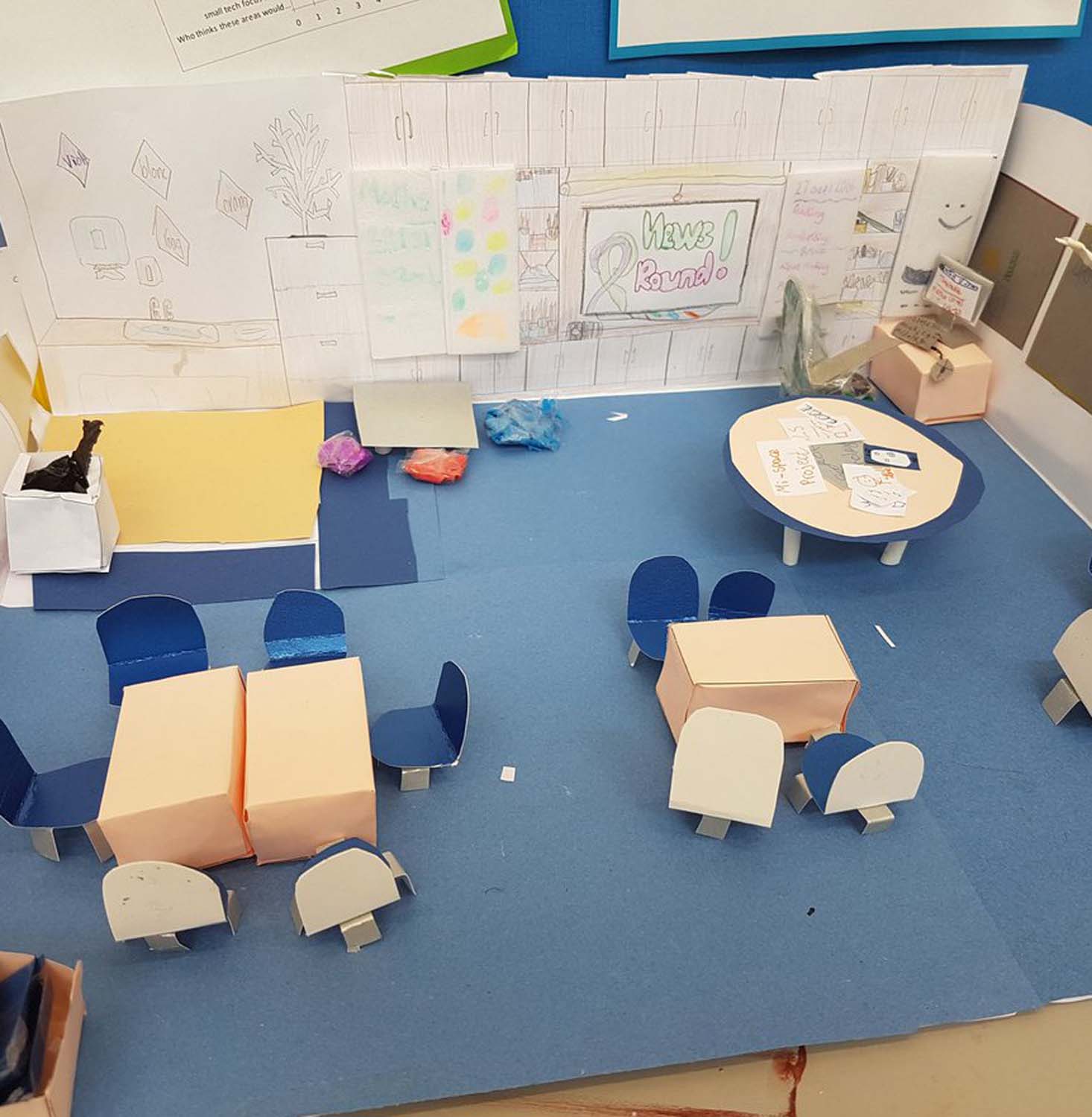Furniture, fixtures and equipment: toolkit and tips
Use our practical guide for furnishing and equipping spaces and settings to deliver better learning environments.

The Scottish Government’s Curriculum for Excellence brings a holistic approach to more effective learning and teaching. It aims to ensure school learning environments are places people and communities can enjoy using.
They should be “well designed, maintained, managed and encourage continuous engagement with learning”.
The drive is to ensure that learners and teachers think in new and imaginative ways about their learning environment and how it can improve education.
Teachers and learners working together
To ensure that schools are prepared for the new curriculum, there has been a national review of the school estate.
Part of this review has focused on the appropriateness of furniture, fittings and equipment (FF&E) within learning spaces.
Many schools are excited about this focus. Teachers and learners are working together to explore the potential opportunities and benefits.
One example is Midlothian Council’s Mi:SPACE project, carried out as part of the Inspiring Learning Spaces initiative.
The toolkit: a practical guide
The Learning Crowd has explored Mi:SPACE in detail and documented its learning, on behalf of Architecture & Design Scotland and Scottish Futures Trust.
This result is this practical guide to furnishing and equipping spaces and settings to deliver better learning environments.
What the toolkit covers
The toolkit document covers:
-
its background, including the Scottish Government’s revised guidance on the suitability of furniture, fittings and equipment, and an overview of Mi:SPACE
-
12 steps including top tips
-
three case studies of schools part of Mi:SPACE
The toolkit’s 12 steps
Those using learning spaces everyday are the real experts in how the spaces are used. They should be the people to identify what is required to makes spaces more effective.
Staff and students should be encouraged to explore different types of learning spaces. Teachers could then create debate and seek consensus as to what would work: How will that make learners more independent? Why is that needed?
The ‘Clever Classrooms’ 2015 research, by the University of Salford, assessed 153 classrooms in 27 primary schools in three UK regions.
It identified the impact of physical features in classrooms on the academic progress of more than 3,500 learners who used them.
Even the best learning environment can be spoiled by a confusion of coats, bags and other ‘stuff’. It makes it harder to reconfigure spaces and lowers the quality of learning and learner engagement.
Without clutter, students and staff have more flexibility to create and own their unique learning environment.
Young bodies are not designed to sit still! It is well known that being able to move around increases oxygen supply and is essential for stimulating cognition.
When students are physically engaged, specific hormones are released that have a positive influence on brain activity. As a result, attention spans grow longer, and the ability to concentrate improves.
It is important that spaces are suited to students with special education needs. For example, research suggests that learners with attention deficit hyperactivity disorder (ADHD) are more settled on furniture designed to let them ‘fidget’.
Several experts have long advocated for open flexible learning spaces. They have stressed the need to avoid all learning being focused at the front of the room, which limits approaches to learning.
Part of Professor Stephen Heppell’s ‘rule of three’ is about having no fewer than three points of focus around classrooms. Teachers can use one focal point without disrupting the whole class.
Today’s students live in a world that is extremely fast-paced, constantly changing, increasingly culturally diverse, technologically driven, and media-saturated. All this needs a fresh set of responses from education.
When using technology there are different scenarios we need to plan for. These include individual study spaces, group collaborative spaces, creative spaces, editing spaces, and performance and audience spaces.
Those who have made significant and positive changes are those who have been supported by their school management, colleagues and parents.
Without the support of leadership, changes will remain in one classroom and won’t be sustainable. How can changing practice in one class be scaled up?
Within a classroom or whole school project, there will be a need to test and trial equipment, furniture, ICT, ways of working, and different approaches to teaching and learning.
Give ownership of ‘testing’ to individuals so they can report back. This reinforces ownership of the product or approach.
Every piece of furniture and equipment in a classroom or learning space should be selected for how it contributes to supporting the learning processes planned for that space.
Many schools select one room to pilot and evaluate a range of new furniture and teaching strategies before making a major investment.
How do you know if the changes have made an impact? Your original vision and brief will have set out what you wanted to achieve, and this is an important starting point.
Think about timing, what you are evaluating, how you will measure success, and how you will use the findings.
Improving spaces is a continuous process. ICT may change and develop, the use of the spaces may change, or the needs of the students vary, and the curriculum may develop or change completely.
Encouraging staff and students to learn with their environment and trial new approaches will always help produce a positive learning environment for all in schools.
Header image credit: Midlothian Council
Improving the lives of Scotland’s new generation of people
We have a variety of resources, case studies and advice opportunities for those involved in creating, adapting and designing learning estates. You can visit our dedicated schools page for more information and get in touch with a member of our team from this page.
